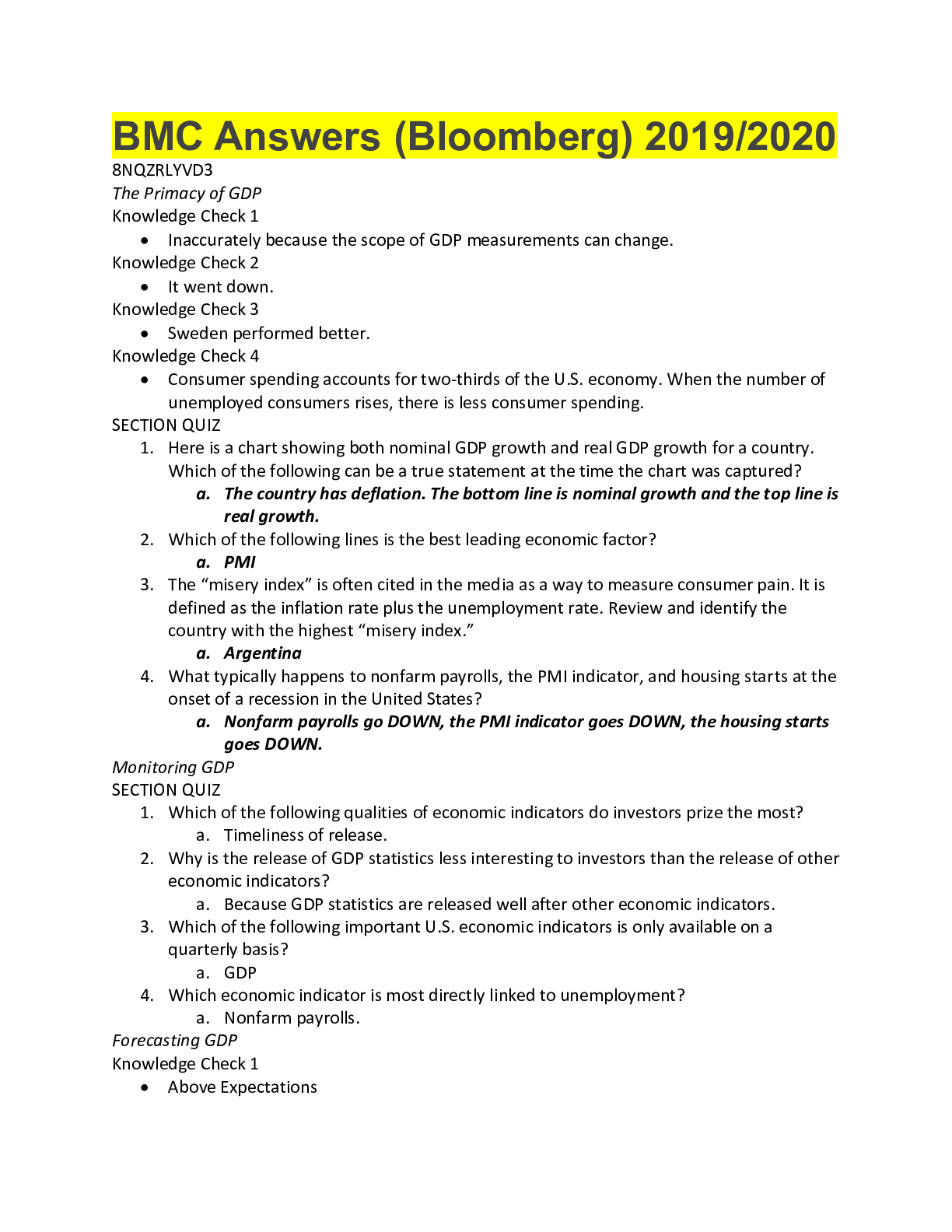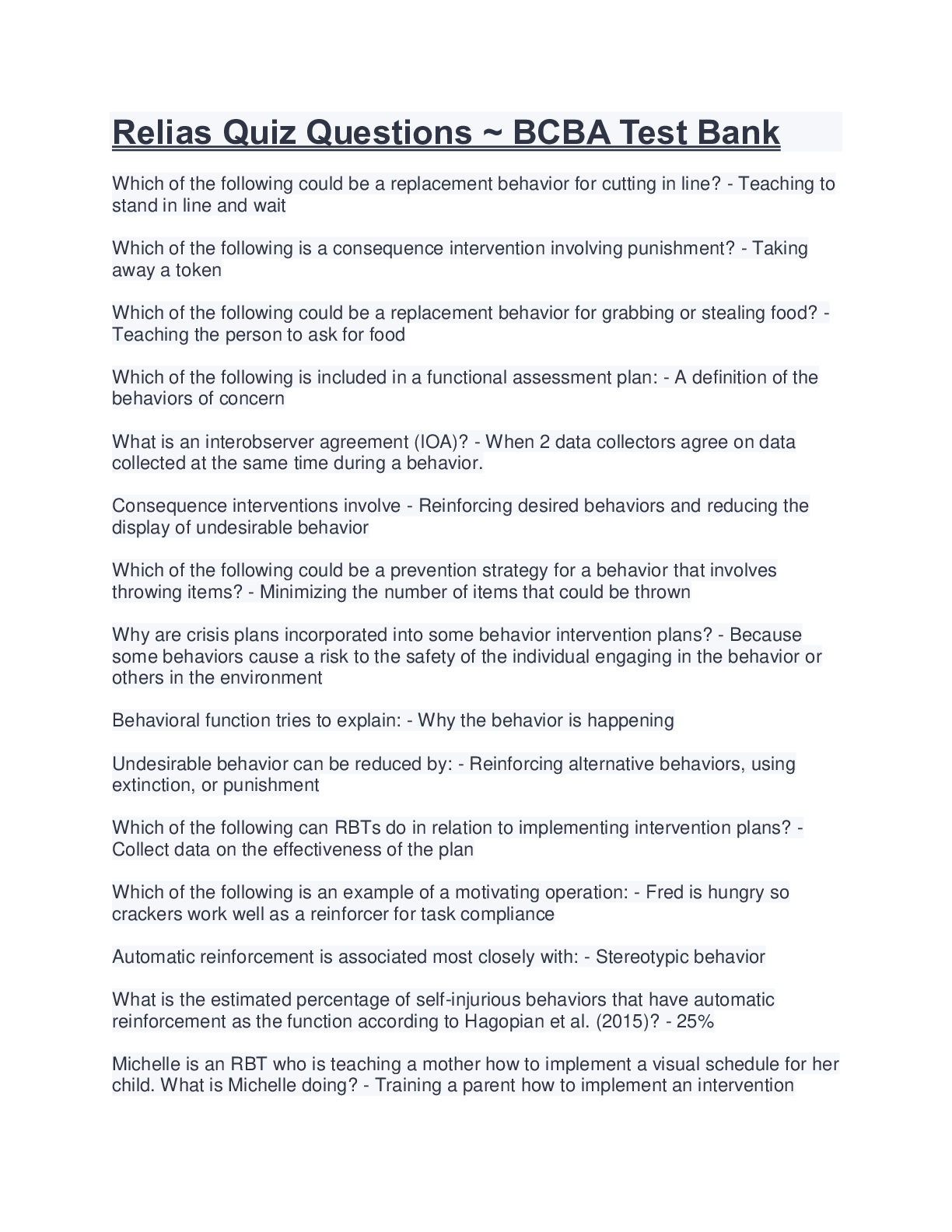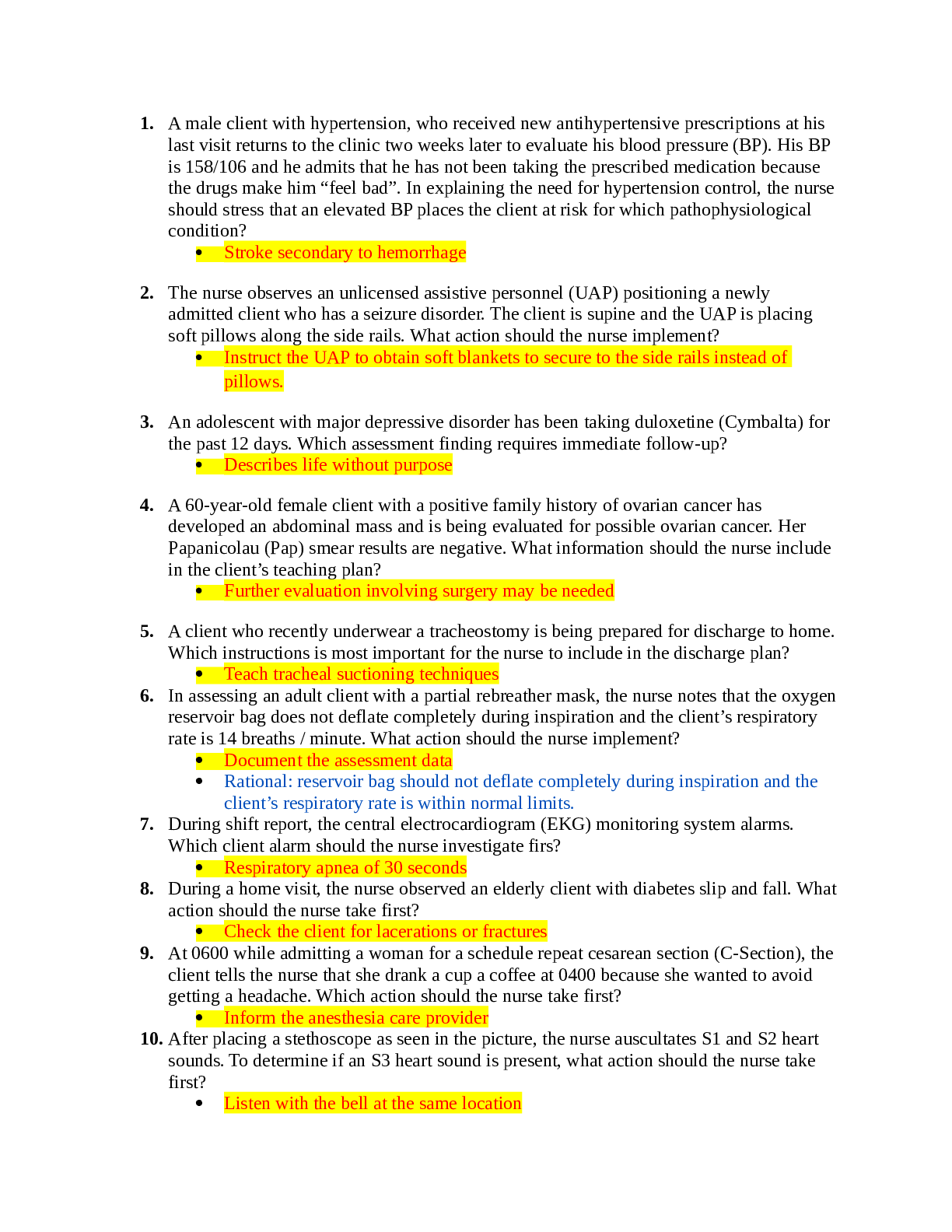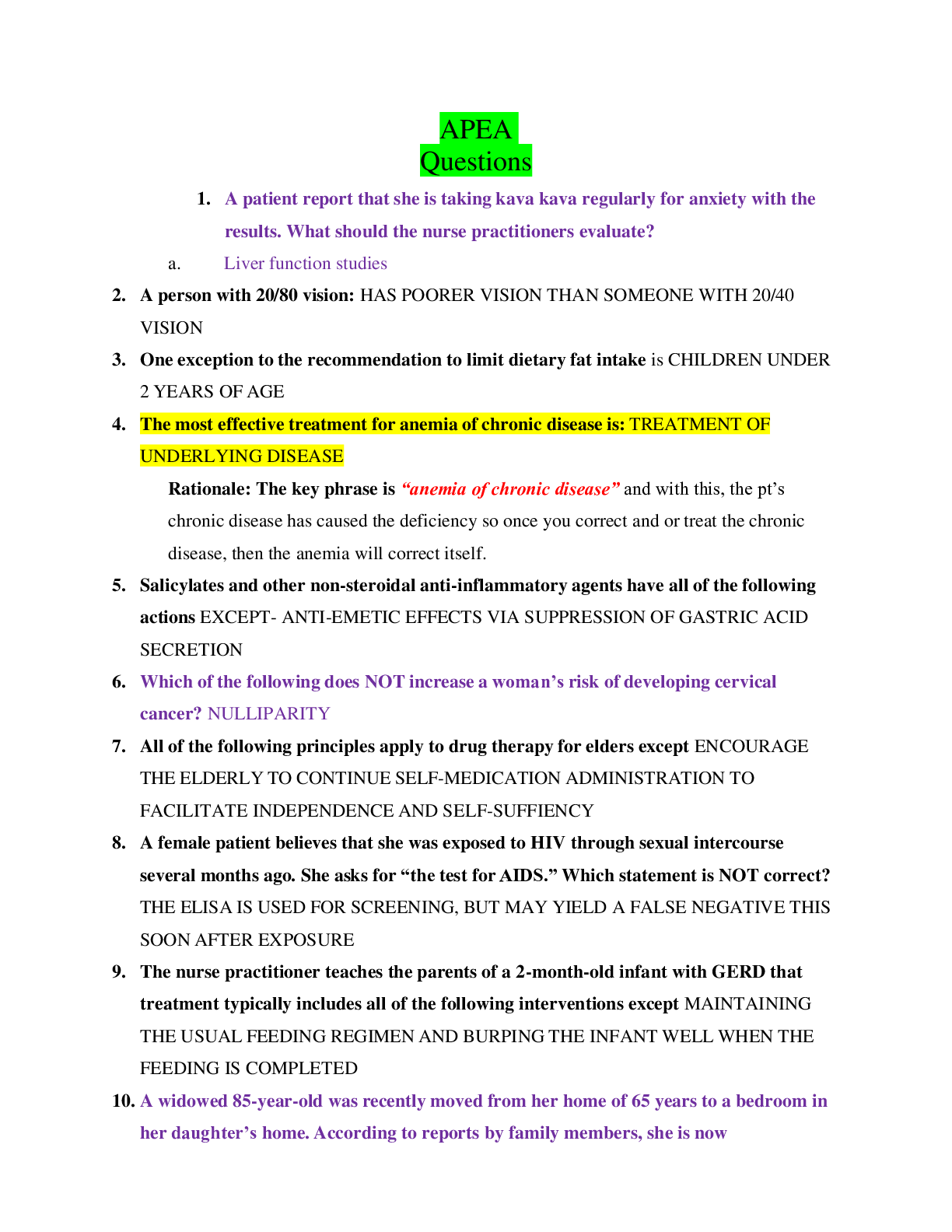*NURSING > QUESTIONS & ANSWERS > NUR 503 Best Mid-Term Study Guide (All)
NUR 503 Best Mid-Term Study Guide
Document Content and Description Below
Understand and compare the different measures of morbidity a. Incidence and prevalence i. Define A prevalence rate is the proportion of the population that has a health condition at a point in time... . For example, 70 influenza case-patients in March 2005 reported in County A. Incidence rate or person-time rate is a measure of incidence that incorporates time directly into the denominator. Incidence refers to the occurrence of new cases of disease or injury in a population over a specified period of time. Although some epidemiologists use incidence to mean the number of new cases in a community, others use incidence to mean the number of new cases per unit of population. ii. Understand why data are important for measuring risk iii. Interpret findings Interpretation involves putting the study findings into perspective, identifying the key take-home messages, and making sound recommendations. Doing so requires that the epidemiologist be knowledgeable about the subject matter and the strengths and weaknesses of the study iv. Understand the relationship between incidence and prevalence and impact of each on duration of disease The two primary measures of morbidity are incidence and prevalence. • Incidence rates reflect the occurrence of new disease in a population. An incidence rate describes how quickly disease occurs in a population. • Prevalence reflects the presence of disease in a population. v. Calculate incidence rate Number of new cases of disease or injury during specified period Time each person was observed, totaled for all persons vi. Calculate prevalence rate Number of new cases of disease or injury during specified period Time each person was observed, totaled for all persons vii. Relationship between prevalence, incidence, and mortality Incidence, prevalence, and mortality rates are three frequency measures that are used to characterize the occurrence of health events in a population. Incidence rate or person-time rate is a measure of incidence that incorporates time directly into the denominator. A prevalence rate is the proportion of the population that has a health condition at a point in time. A mortality rate is a measure of the frequency of occurrence of death in a defined population during a specified interval. viii. Examples of incidence rates and prevalence rates Prevalence example, 70 influenza case-patients in March 2005 reported in County A, Incidence for example, 70 new cases of breast cancer per 1,000 women per year. This measure conveys a sense of the speed with which disease occurs in a population, and seems to imply that this pattern has occurred and will continue to occur for the foreseeable future. 2. Surveillance a. Importance of surveillance Public health surveillance is the ongoing, systematic collection, analysis, interpretation, and dissemination of health data to help guide public health decision making and action. Surveillance is equivalent to monitoring the pulse of the community. The purpose of public health surveillance, which is sometimes called “information for action,”18 is to portray the ongoing patterns of disease occurrence and disease potential so that investigation, control, and prevention measures can be applied efficiently and effectively b. Define and discuss passive verses active surveillance, including examples and advantages and disadvantages of each surveillance, passive public health surveillance in which data are sent to the health agency without prompting. form of data collection, in which health-care providers send reports to a health department on the basis of a known set of rules and regulations, is called passive surveillance (provider-initiated). Investigators may conduct what is sometimes called stimulated or enhanced passive surveillance by sending a letter describing the situation and asking for reports of similar cases surveillance, active public health surveillance in which the health agency solicits reports. This active surveillance (health department- initiated) is usually limited to specific diseases over a limited period of time, such as after a community exposure or during an outbreak. They may conduct active surveillance by telephoning or visiting the facilities to collect information on any additional cases. 3. Understand, compare, and interpret the different measures of mortality, including calculating and interpreting data in tables a. Importance of having numerator (# of deaths) and denominators (population at risk) when determining risk b. Absolute number verses a rate c. Mortality rates d. Age adjusted mortality rates e. Case-fatality rate f. Proportionate mortality ratio 4. Define, interpret, and compare measures of validit Validity refers to whether surveillance data are measuring what they are intended to measure. As such, validity is related to sensitivity and predictive value positive. See page 44 for table 5.10 a. Sensitivity: the ability of a test, case definition, or surveillance system to identify true cases; the proportion of people with a health condition (or the proportion of outbreaks) that are identified by a screening test or case definition (or surveillance system). b. Specificity: the ability or a test, case definition, or surveillance system to exclude persons without the health condition of interest; the proportion of persons without a health condition that are correctly identified as such by a screening test, case definition, or surveillance system. c. Characteristics of a good screening test: 5. Understand how realiability can be improved for screening tests 6. Disease transmission and outbreaks a. Define attack rate: an attack rate is the proportion of the population that develops illness during an outbreak. For example, 20 of 130 persons developed diarrhea after attending a picnic. b. Calculate attack rate based on information in a table Number of new cases of disease during specified time interval Population at start of time interval c. Understand modes of disease transmission and common terms used in outbreaks An infectious agent may be transmitted from its natural reservoir to a susceptible host in different ways. There are different classifications for modes of transmission. Here is one classification: See page 64 d. Define epidemic curve and understand distribution in a single-exposure, common-vehicle outbreak To show the time course of a disease outbreak or epidemic, epidemiologists use a graph called an epidemic curve. Please see page 36 Vehicles that may indirectly transmit an infectious agent include food, water, biologic products (blood), and fomites (inanimate objects such as handkerchiefs, bedding, or surgical scalpels). A vehicle may passively carry a pathogen — as food or water may carry hepatitis A virus. Alternatively, the vehicle may provide an environment in which the agent grows, multiplies, or produces toxin — as improperly canned foods provide an environment that supports production of botulinum toxin by Clostridium botulinum. e. Review the cross-tabulation Tables (2-5 and 2-6) and understand how cross- tabulation can be used to identify a source, including how to calculate and compare attack rates in a food-borne outbreak f. Key terms: i. Immunity (see glossary): ii. Epidemic: the occurrence of more cases of disease, injury, or other health condition than expected in a given area or among a specific group of persons during a particular period. Usually, the cases are presumed to have a common cause or to be related to one another in some way iii. Endemic: the constant presence of an agent or health condition within a given geographic area or population; can also refer to the usual prevalence of an agent or condition. iv. Herd immunity: the resistance to an infectious agent of an entire group or community (and, in particular, protection of susceptible persons) as a result of a substantial proportion of the population being immune to the agent. Herd immunity is based on having a substantial number of immune persons, thereby reducing the likelihood that an infected person will come in contact with a susceptible one among human populations, also called community immunity. v. Common-vehicle exposure vi. Single exposure vii. Incubation period: After the disease process has been triggered, pathological changes then occur without the individual being aware of them. This stage of subclinical disease, extending from the time of exposure to onset of disease symptoms, is usually called the incubation period viii. Epidemic curve ix. Clinical disease: a disease that has been manifested by its symptoms and features. x. Latent disease: the time from exposure to a causal agent to onset of symptoms of a (usually noninfectious) disease xi. Subclinical disease: [Show More]
Last updated: 1 year ago
Preview 1 out of 4 pages

Reviews( 0 )
Document information
Connected school, study & course
About the document
Uploaded On
Aug 06, 2021
Number of pages
4
Written in
Additional information
This document has been written for:
Uploaded
Aug 06, 2021
Downloads
0
Views
49

.png)
.png)
.png)
.png)
.png)
.png)
.png)
.png)
.png)
.png)
.png)

.png)
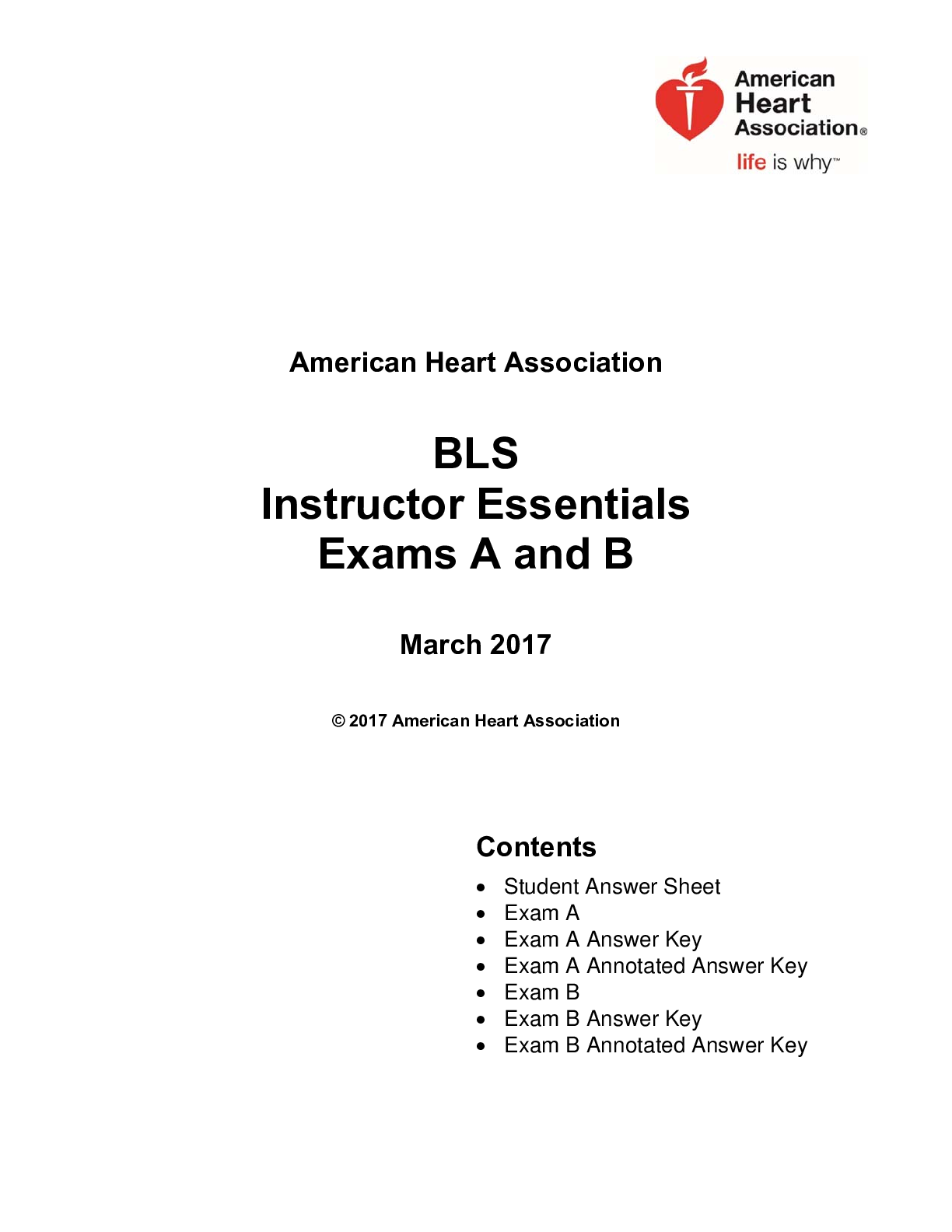
.png)
.png)
